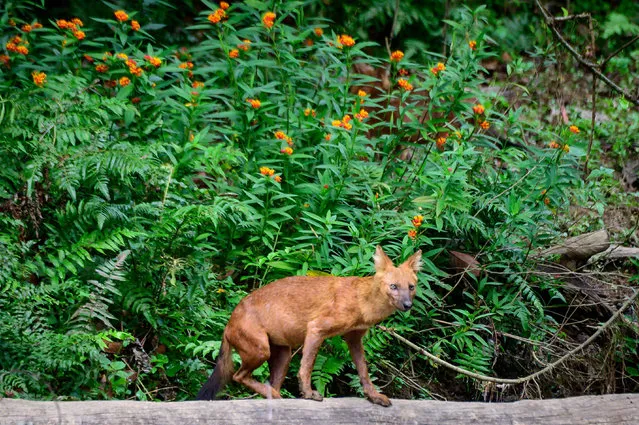
This photograph taken on March 23, 2021 shows a dhole (Asiatic wild dog) in Khao Yai National Park, some 130 kilometers north of Bangkok, Thailand. (Photo by Mladen Antonov/AFP Photo)
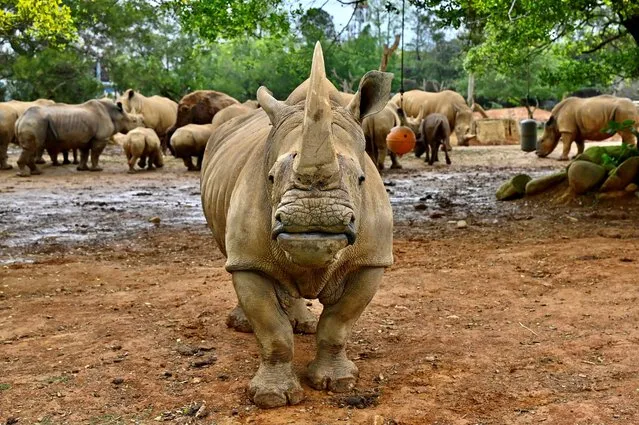
Emma, a southern white five-year-old female rhino, stands in front of other rhinos before her travel from Taiwan Hsinchu's Leofoo Village Zoo to Japan's Tobu Zoo for breedin, on March 2, 2021. (Photo by Sam Yeh/AFP Photo)

A chihuahua sits in a pool full of plastic balls at the 10th Thailand international Pet Variety Exhibition in Bangkok on March 26, 2021. (Photo by Mladen Antonov/AFP Photo)
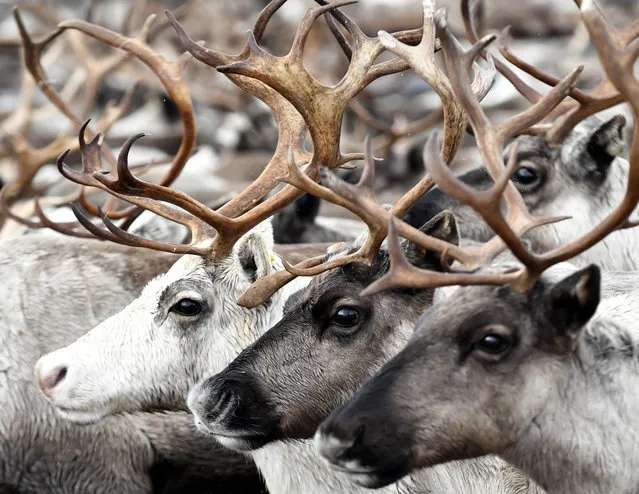
Deer in a corral before anthrax vaccination performed by the regional state veterinary service in the village of Lovozero in Murmansk Region, Russia on March 24, 2021. (Photo by Lev Fedoseyev/TASS)
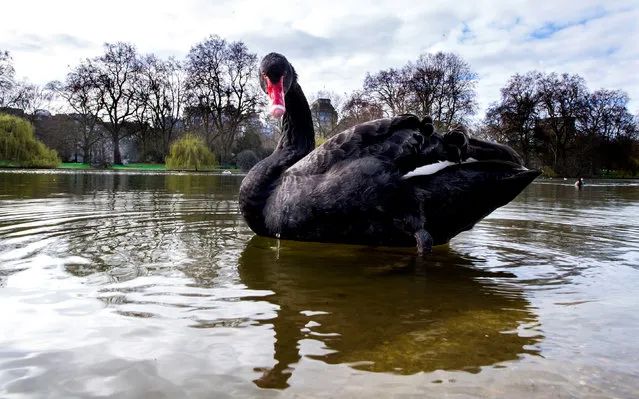
A black swan seen in St James's Park in London, United Kingdom on Sunday March 21, 2021. (Photo by Ian West/PA Images via Getty Images)
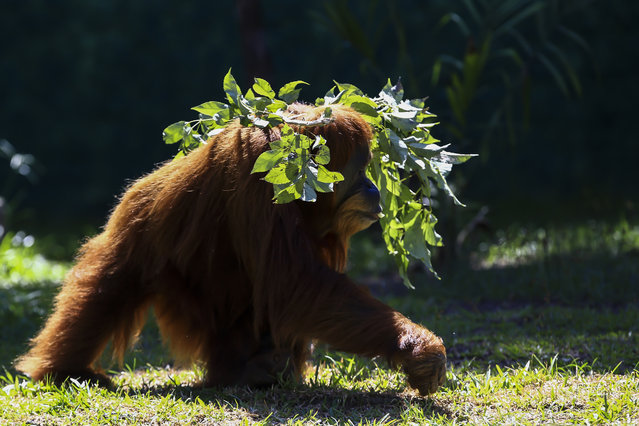
An Orangutan named Elze walks in the Biopark of Rio during a media tour in Rio de Janeiro, Brazil, Thursday, March 18, 2021. The park was closed to the public for renovations to convert the city zoo into a center for biodiversity conservation and will reopen to the general public at the end of March. (Photo by Bruna Prado/AP Photo)
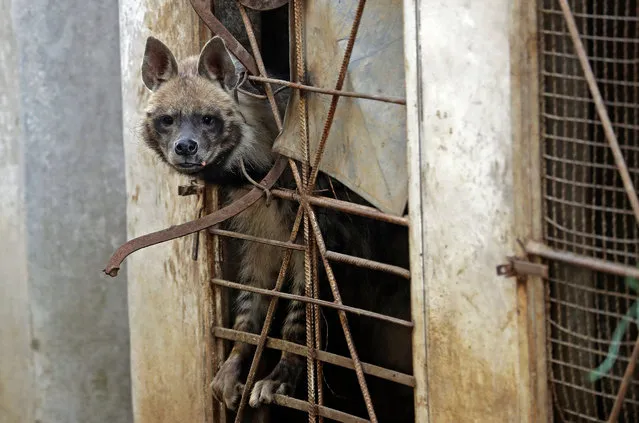
A striped hyena is pictured at the Animal Encounter environmental conservation centre in the Lebanese mountain town of Aley, southeast of the capital Beirut, on March 6, 2021. Through the centre, the founder, Lebanese mammalogist Mounir AbiSaiid, works on environmental awareness, rehabilitation of injured, orphaned or trapped wild animals, as well as saving shot and injured birds. (Photo by Joseph Eid/AFP Photo)
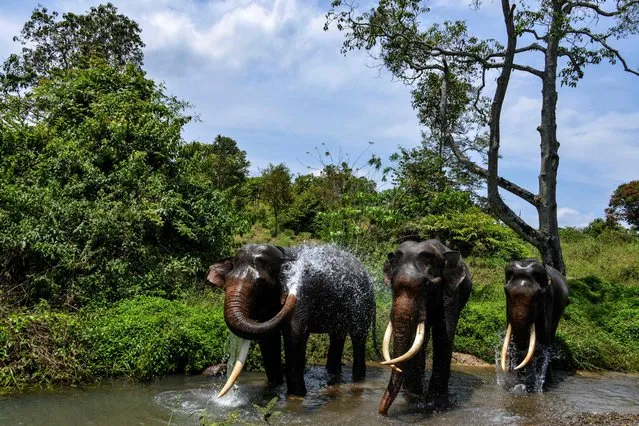
Sumatran elephants bathe during a ranger patrol at a forest in Bener Meriah, Aceh province, Indonesia on March 15, 2021. (Photo by Chaideer Mahyuddin/AFP Photo)
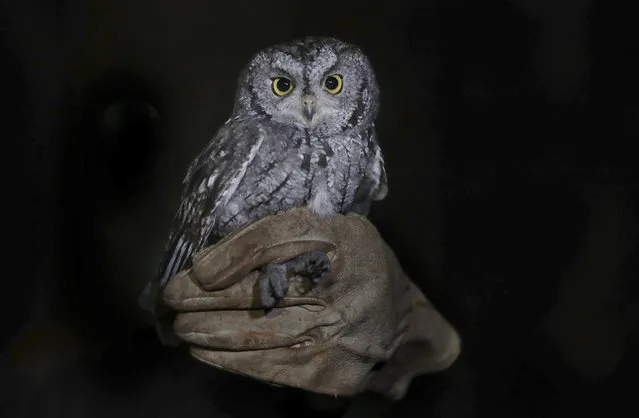
Researcher Rodrigo Medellin from UNAM's Institute of Ecology holds an owl as he and his students catch and release birds on campus as part of a nighttime field study to identify bird species on the university campus in Mexico City, Tuesday, March 16, 2021. According to Medellin, this owl is called in Spanish “Tecolote del Oeste”, and its scientific name is Megascops kennicottii. In English, it is known as a Western screech owl. (Photo by Marco Ugarte/AP Photo)
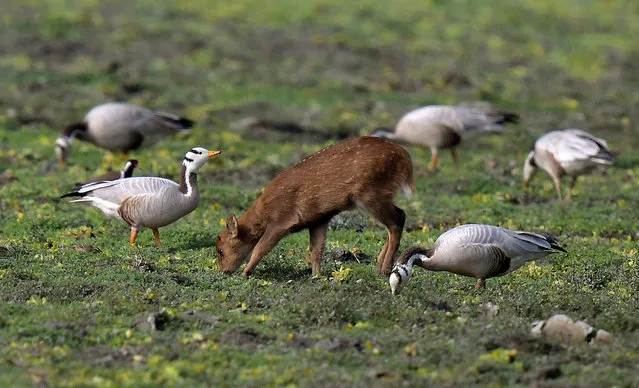
A baby barking deer grazes near bar-headed geese inside Kaziranga National park, Golaghat district of Assam, India, 10 March 2021. (Photo by Pranabjyoti Deka/EPA/EFE)
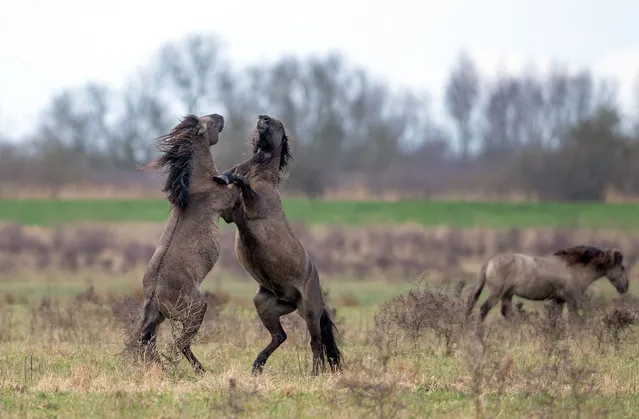
Konik ponies fight for dominance as the foaling season begins at the National Trust's Wicken Fen Nature Reserve in Cambridgeshire, United Kingdom on Tuesday March 16, 2021. (Photo by Joe Giddens/PA Images via Getty Images)
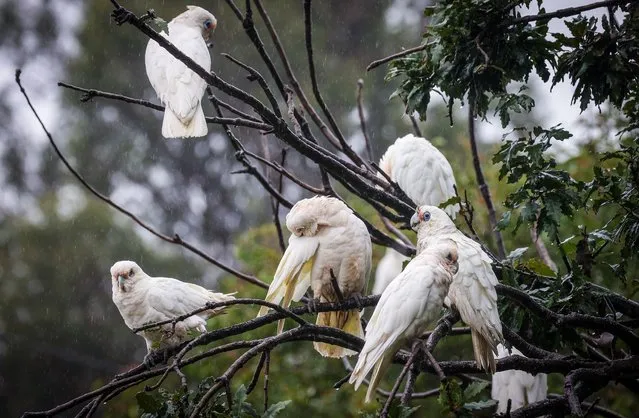
Australian native birds called Cockatoos rest in a tree as rain continues to fall on March 23, 2021 in the western Sydney suburb of Windsor, Australia. Evacuation warnings are in place for parts of Western Sydney as floodwaters continue to rise. (Photo by David Gray/Getty Images)
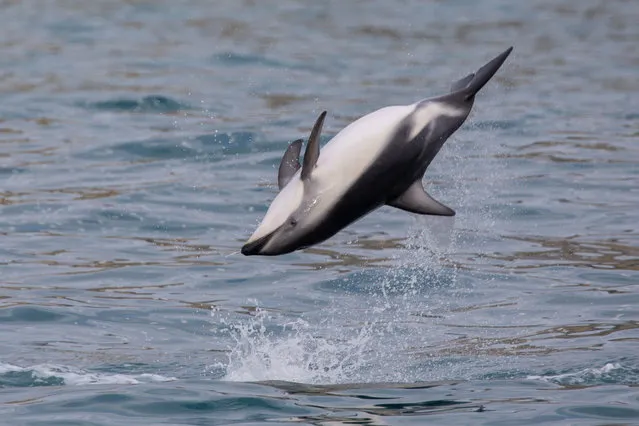
A Dusky dolphin (Lagenorhynchus obscurus) jumps out of water in Kaikoura bay in Kaikoura Peninsula, South Island, New Zealand on March 25, 2021. Kaikoura is recognized as one of the best places in the world to regularly encounter wild dolphins in their natural environment, hundred to thousands dolphins can be present all year round as groups. Dusky dolphins are more common and abundant in this area. This is also a famous travel destination for whales, fur seals, albatross, rare birds watching and swimming with dolphins in New Zealand. (Photo by Sanka Vidanagama/NurPhoto/Rex Features/Shutterstock)
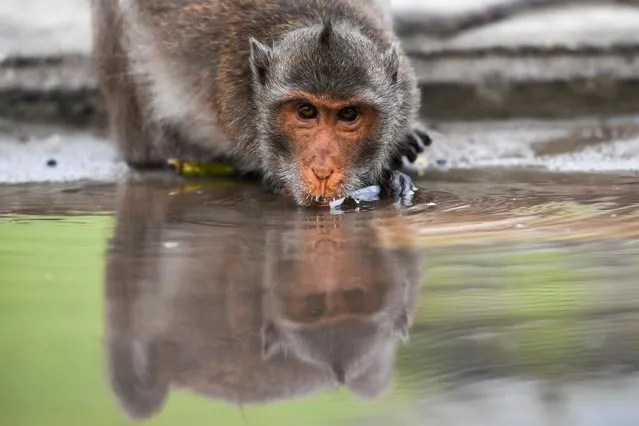
A long-tailed macaque drinks water in a mangrove near Bang Khun Thian on World Water Day at the outskirts of Bangkok, Thailand on March 22, 2021. (Photo by Chalinee Thirasupa/Reuters)
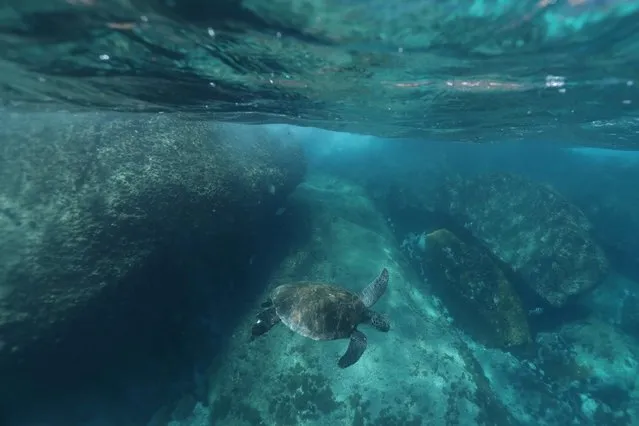
A turtle swims after an ocean cleaning by Sea Shepherd NGO volunteers to remove garbage at Ancora island in Buzios, Rio de Janeiro state, Brazil on March 14, 2021. (Photo by Pilar Olivares/Reuters)
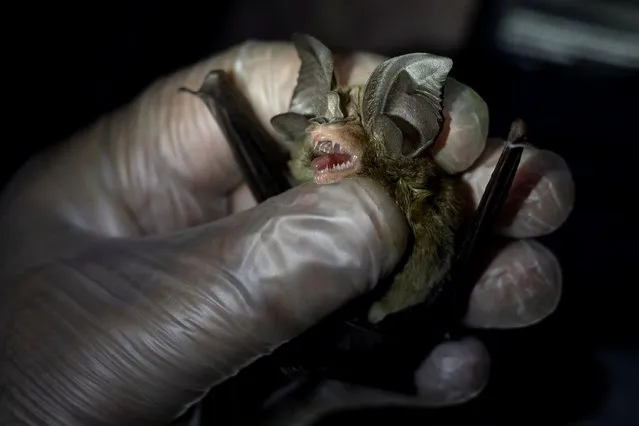
Phillip Alviola, a bat ecologist, holds a bat that was captured from Mount Makiling in Los Banos, Laguna province, Philippines, March 5, 2021. “What we're trying to look into are other strains of coronavirus that have the potential to jump to humans”, said Alviola. “If we know the virus itself and we know where it came from, we know how to isolate that virus geographically”. (Photo by Eloisa Lopez/Reuters)
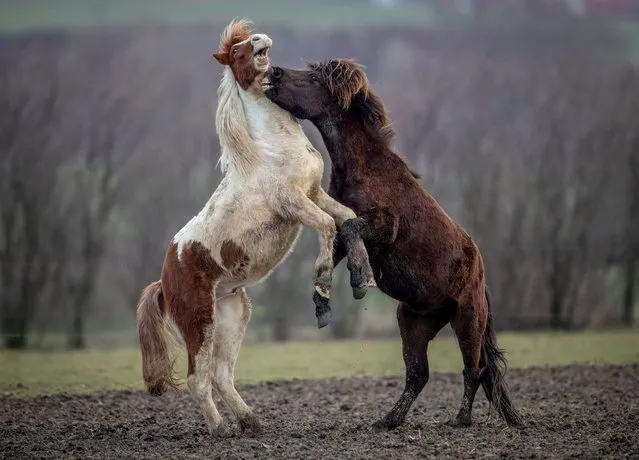
Icelandic horses play in their paddock at a stud farm in Wehrheim near Frankfurt, Germany, Tuesday, March 16, 2021. (Photo by Michael Probst/AP Photo)
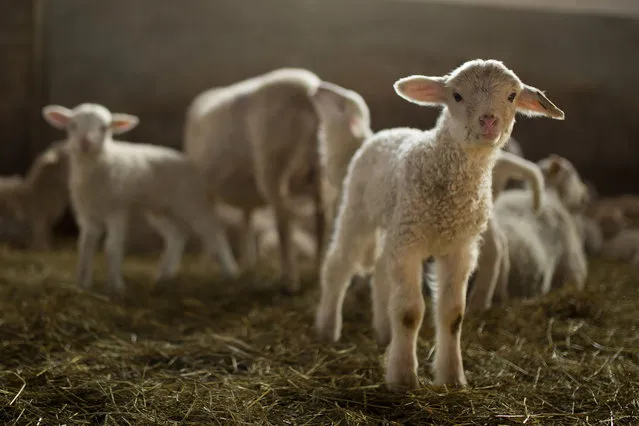
The lamb looks curiously at the photographer's camera on March 09, 2021 in Vazec, Slovakia. With the added complications in transporting cattle during the coronavirus pandemic, breeders are now targeting local markets. Approximately 150, 000 lambs are born in Slovakia each spring, with 50% destined for European markets before pandemic times. The Slovak market with lamb meat was more markedly opened for Slovak consumers after the first wave of coronapandemic in 2020 and it proved that there is a demand for it. Sheep and Goat Farmers' Association in Slovakia assumes that there will be even bigger demand on a local market during the Easter season 2021. Ecofarm in Vazec village breeds Wallachian sheep which is a national sheep breed. Ecofarm expects about 1000 lambs to be born by the end of March. Their aim is to distribute lamb meat primarily to the domestic market. Ecofarm Vazec noticed a higher number of lambs – twins compared to the previous years. (Photo by Zuzana Gogova/Getty Images)
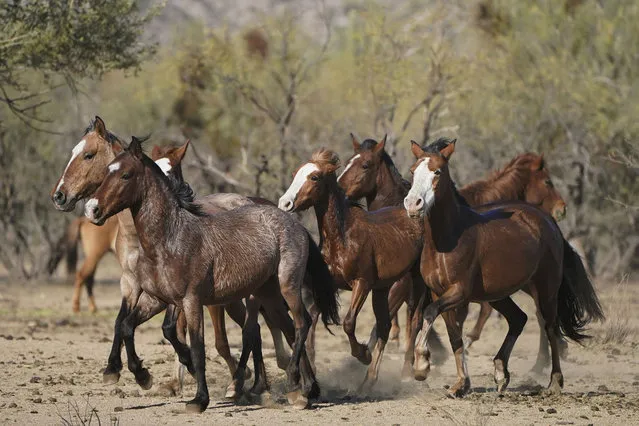
A team of Salt River wild horses arrive at a site for emergency feeding run by the Salt River Wild Horse Management Group near Coon Bluff in the Tonto National Forest, near Mesa, Ariz., Wednesday, March 10, 2021. Due to prolonged drought in the area, the horses are fed hay daily. (Photo by Sue Ogrocki/AP Photo)
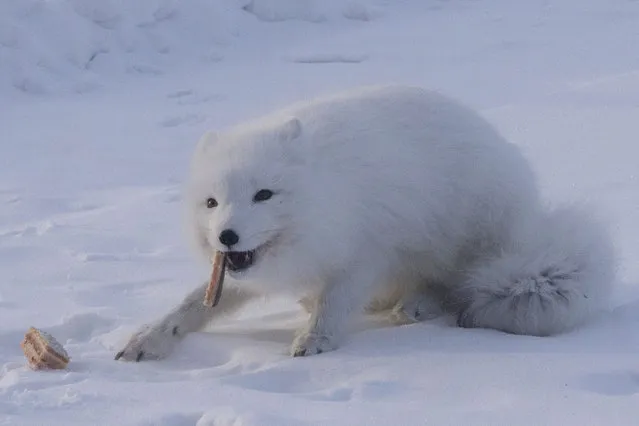
An arctic fox also known as polar and white fox of Vorkuta eats a piece of cake thrown by passengers of Khorota railway station as wild animals suffer from hunger due to extreme weather condition in Vorkuta, Komi Repbulic, Russia on March 08, 2021. (Photo by Lana Sator/Anadolu Agency via Getty Images)
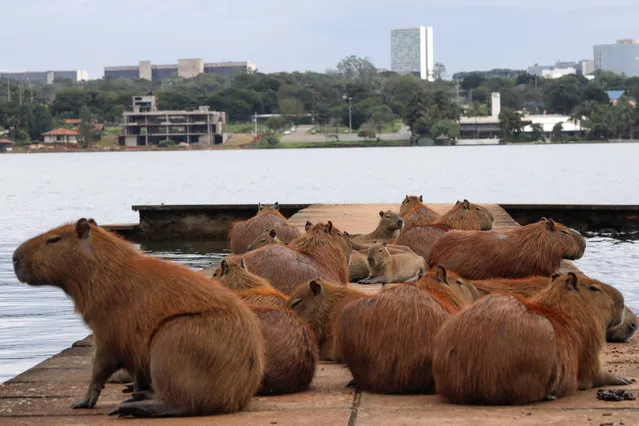
Capybaras are seen at a pier on Paranoa lake, amid the coronavirus disease (COVID-19) outbreak, in Brasilia, Brazil, March 18, 2021. (Photo by Ueslei Marcelino/Reuters)
28 Mar 2021 09:55:00,
post received
0 comments
